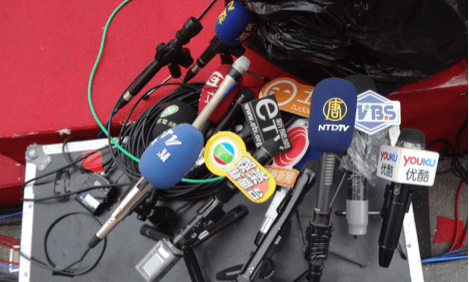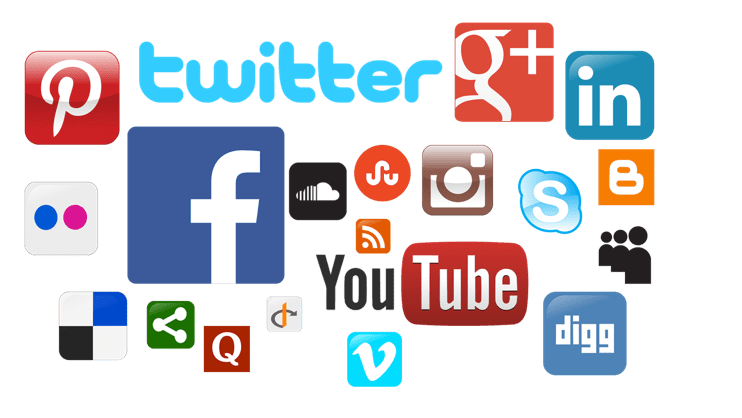Building and Maintaining Relationships with the Media and Other Key Stakeholders in Public Relations
I. Key to a Great PR Campaign
Public Relations (PR) is one of the most cost-effective ways to build a brand. PR is able to place your brand before the eyes of your audience through the media that they consume.

No other PR tool is more widely known than publicity. It is free and high-reward. But if it was easy, then everybody would be doing it already.
PR is about building a relationship with various stakeholders, such as the media, among many other stakeholders. This is the key to a successful publicity-driven PR campaign.
Unfortunately, most people neither have the patience nor the timetable to build relationships with their key audiences.
The importance of building and maintaining relationships in Public Relations

Why build relationships? Can’t you just pay your way into getting published? You may. That is called advertising. There is a time and place for that.
If you want to build a brand that has a longer-lasting value such as Apple, Starbucks, Amazon, and Walt Disney, then you need PR. These guys didn’t build their brand overnight.
First, you need to build a relationship with your key media because they will decide if your story is worth the valuable and limited real estate in their publications or platforms. They are the frontline gatekeepers. You need to engage them.
Second, the media enjoys the trust of their readers whose business you need for your product. If you want readers to trust your brand, you need to earn the media’s trust first. If the media thinks that your story is worth publishing, then their readers will also think that your story is worth reading.
Third, the media will always be around to fill information gaps for the public. Even though trust ratings in the media are falling in most countries, the media still enjoys high levels of patronage overall compared with other channels.
II. Understanding the Media Landscape

Knowing your way around the media landscape is important if you want to build a value-based relationship with the media.
You have to understand their tone, audience, and editorial policies.
You also have to know who’s who. Who is the editor that takes care of a particular section? Which reporter covers which beat? Who is the writer for executive interviews and profiles?
Be aware of the media’s birthdays and special occasions. Don’t just think of them when you have press releases. Send them “Thank You” notes or gifts during their birthdays.
No two publications are the same. There will be nuisances in how you approach them. Some publications still entertain PR people at their premises while others are totally close to outsiders, especially during busy times. Some use press releases without much hassle while others like to rehash the whole story.
Different types of media and their audiences
Just as there are different products, there are also different types of media.

The traditional types of media are print, TV, and radio. Most people don’t have any problems distinguishing between the three. We can skip these.

Due to technology, defining the media along traditional lines won’t do any good. So, aside from print, TV and radio, we can also add the following:
1. Online media, which are websites dedicated to providing news and information online. These are usually the online versions of traditional news media outlets such as CNN, Inquirer, Top Gear, National Geographic, etc. These media are patronized by the older generation who like and trust the familiarity of brand media names.

2. Next are podcasts. Podcasting has risen to prominence thanks to the lockdowns we had to go through during the pandemic. They have dedicated and passionate followers. Podcasts are popular with the older section of millennials. These are people who are beginning to realize financial independence.

3. Let’s not forget about the YouTubers. YouTube is the second most visited search engine in the world with its limitless video content on just about anything. Its popularity has democratized video content-making previously monopolized by big media companies. YouTube is popular with a vast segment of society because there is just so much content for everyone.

4. We can’t discuss media without mentioning social media influencers. Influencers are able to make their lifestyles and passions relatable to similar-minded people. Social media like TikTok, Twitch, Snapchat, and Instagram have billions of views daily which can really help a brand break through the clutter.
The role of social media in modern media relations

Social media has become one of the leading sources of information for people.
You can just observe this during the election period. More people readily share suspicious information that they stumble on in social media than factual news reports.
As a brand, you cannot ignore social media because that is where your audience is.
Besides, social media allows you to directly engage with your audience for practically free.
Social media let brands humanize themselves by interacting directly with their customers. Instant messaging means people expect their favorite products to engage with them.

Buttons such as likes, shares and comments are vital indicators of audience sentiment towards your brand. The more they like your content the more they gravitate towards your product.
Guess what? Media also have their social media pages. You can use this to build relationships with them.
Follow, like, share and comment on their posts.
They will most likely follow you in return.
The more you react to their posts the more likely they will notice you. The moment you notice that they are starting to react to your posts, that’s when you can start messaging them privately.
Don’t lead with a press release or an invite. Let them know that you enjoy and relate to most of their posts. Start a conversation. Invite them for coffee.
Tips for researching and identifying key media outlets and influencers

One of the best things about the Internet is that it makes the world a smaller place. Research has never been easier. You can find out who’s who in your media sphere with just a few clicks on their websites. You can also check out press corps that cover certain beats such as the Central Bank, Department of Finance, police precincts, and the Office of the President.

Swing by and bring coffee and doughnuts for everyone. Don’t be shy to hand out your card and get theirs in return.
It’s not enough to know the names behind the titles, you also have to know the inner workings of each publication.
Sometimes, an editor can cover multiple sections such as business, technology, transportation, and even energy. There are also reporters who double as editors and even as graphic artists. You can find out about this by establishing a contact and asking for information during one of your many rendezvous.

Pull every name you find out into a central database. Take notes of who picked up your press releases and when. Over time you will get a clearer picture of the media friendlies and those you need to finesse over.
III. Building Relationships with the Media

The importance of building trust and credibility with the media
Now just because you have your media database doesn’t mean you can spam them to high heavens.
Those are just names on your list until you earn their trust and build relationships with them.
It’s important to establish your credibility as a source of valuable and relevant information for their readers.
Without trust and credibility, your press releases will go straight to the trash bin. Imagine the piles of press releases and media alerts these journalists get in a day.

Add to that the tons of unsolicited phone calls, messages and emails they have to power through.
Whose press release do you think they will print, a familiar name or you the stranger?
Strategies for reaching out to and engaging with the media (such as media pitches and press releases)
First and most importantly, is to have stories that are relevant and valuable to their readers.
Make sure that your story, angle, tone, and data are written well and written according to the media’s editorial style and policy.
Second, make their jobs easier. You can do this by doing a cover letter on what the press release is all about. Be clear about what’s in it for their readers.

Third, accurately format your press releases. At least, 1.5 spaces for the main body, flush left, and 12 points Times Roman fonts.
As for the headline, make it Arial 14 points. Don’t get cute with your headlines. Make them descriptive, at least two lines long.
Fourth, supply more than one hi-res photo for the media to select.
Fifth, email your press release. No one sends printouts anymore. Include links to resources that are too big to be included in the email.
Sixth, allow two weeks for your story to see the light of day. Never call and ask why they haven’t used your story yet.
What you can do is update your story with more data or photos that will make the story even more appealing. If that doesn’t work, then move on to the next press release. Don’t be a nuisance.
Maintaining ongoing relationships with media contacts

First, be sure to thank the media if they use your story. Also, send them thoughtful items during their birthdays and special occasions such as Christmas.
Second, cultivate them as friends, not as sources of scoops. Take them out for lunch or coffee. Drop by just to say hello. Like and share their posts.
Third, reserve the juiciest stories for your most ardent and loyal media friends. Give them dibs on exclusives.

Fourth, remember little nuisances like dietary restrictions. Take note of the vegans, food allergies or just plain preferences like coffee over soft drinks. The media will appreciate these little gestures and endear you to them.
IV. Building Relationships with Other Key Stakeholders
The importance of building relationships with other key stakeholders, such as customers, partners, and industry leaders
We are talking about Public Relations, so your public is not only the media.

Never neglect your other stakeholders. You should engage with your customers, regulators, and your employees. Here’s how:
1. Customers: It is now possible to directly engage with your customers through social media such as Facebook, Messenger, Twitter, Tiktok and others.
Imagine the precious customer information you can learn and study such as their behavior and preferences.
People used to pay big money to research firms to get such data. With social media analytics, you get this data hot and fresh. Not months later but while people engage on your social media pages.
Now don’t just go off and create a social media page without giving it much thought. You need to create a social media plan with target personas, strategies, content buckets, KPIs, FAQs, and reports. A social media page can be a black hole in resources if not managed correctly.

2. Regulatory agencies: If your company belongs to an industry that is closely monitored by the government such as energy and petroleum, you need to work closely with the regulators and other relevant authorities.
You don’t want to get blindsided by any changes in policies and rules, certainly not without consultation. Get a seat at the decision table.
Most hearings in government offices are public so be sure to get a copy of the schedule. Inform the proper officials that you would like to be present. Then, have a representative take notes of proceedings at the very least. Record the motions, proposals, and bills filed, who were present, and when is the next meeting.
Back in the office, have your team report, assess, and make recommendations which you will forward to your top management.

3. Employees: You heard the saying that a business’s most important asset is its people. It’s certainly true especially when it comes to Public Relations.
Employees can be your brand’s foremost advocates and ambassadors. They are the ones who go on into the communities to become the face of your company.
Create employee buy-in by keeping them informed with regularity. Be consistent with your messaging.
A simple newsletter sent once a month will do great in forging company culture and employee engagement. Nothing fancy. Just keep it down to the facts and tell them what they should do.
Ensure that you have a feedback mechanism such as a hotline, email or chat group for any suggestions or even criticisms. If employees feel that they are part of the process, then they will likely support the company’s decisions.
V. Conclusion
Now that you have an overview of the importance of the media and the other stakeholders in Public Relations, the next step is to create a plan.

We already gave you some simple tips that you can use right away for very little cost. Do note that a plan is dynamic. You should be able to make adjustments based on what you find on the ground.
If you think you need help, just ping us for a free consultation.
